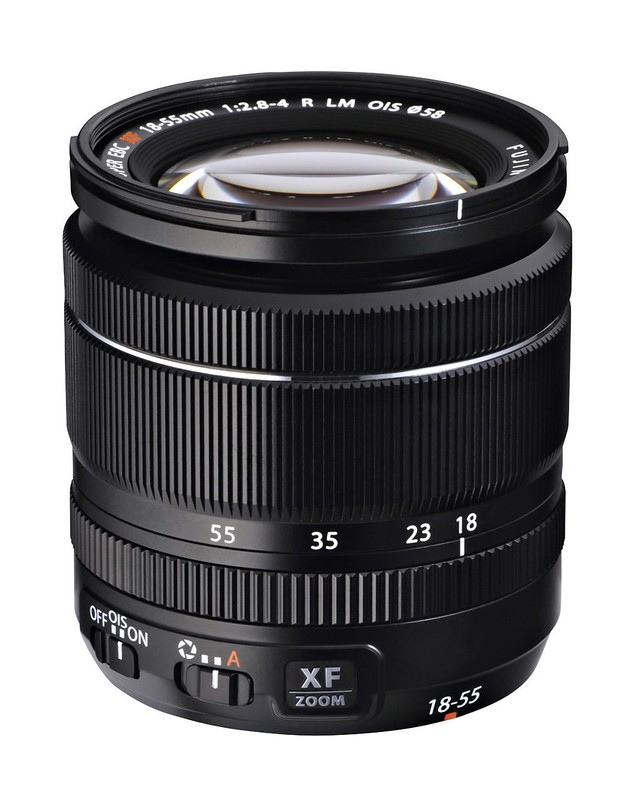Decoding XF18-55mmF2.8-4 R LM OIS
by Rico Pfirstinger
Today’s scheduled Fujifilm X-Mount camera and lens firmware update would have been a great opportunity for an X-PERT CORNER article with some practical tips for updating your gear. Alas, the update has been postponed in order to address another glitch. Hopefully, we’ll see the update soon and can cover it in next week’s edition of this column.
Before we take-off with today’s little “ersatz topic”, let me point you to my recent article comparing several RAW converters that are suitable for X-Trans sensor cameras like the X-Pro1 and X-E1 (and soon X100S and X20). Since that article was first published on January 15, I have added a few more samples and another RAW converter to the equation: Russian-made RPP. So if you haven’t already done so, feel free to check-out the updated (pun intended) version by clicking here. You might also want to scroll down to the article’s comment section, as it contains several interesting user additions and a little Q&A.
In case you didn’t get the memo: Delivery of Fuji’s new XF14mmF2.8 R wide-angle prime lens appears to be imminent. Those who are interested in this lens can have a look at over 20 sample shots I have taken with a pre-production model of this lens. And click here for a brief article illustrating how well-corrected this lens appears to be by optical (aka non-digital) means. Fuji may have another winner here.
Speaking of imminent delivery, “Mastering the FUJIFILM X-Pro1” is finally shipping physically and electronically. Yay! It was about time. In case you were wondering, the book is just as valuable for users of the X-E1. Since I am writing and publishing all my articles on FUJIRUMORS (and other sites) for free, my only form of compensation is actually you guys buying (and hopefully liking) the book. Just sayin’.

Enough with the advertising! Apart from the new 14mm prime, one of the most pleasant surprises I experienced last fall was Fuji’s “kit zoom” lens, also known as the FUJINON XF18-55mmF2.8-4 R LM OIS. Wow, what a name! And what a lens! Certainly not your typical “kit zoom”, even though it’s often bundled with the X-E1. Let’s have a look at what each portion of the long name actually means.
XF
This is a no-brainer and simply means that the lens is suitable for X-Mount cameras from Fujifilm. X-Mount is a new bayonet with very little flange-back: only 17.7mm. Flange-back is the distance between the lens mount (where it sits on the camera body) and the camera sensor or film. This is why you can pretty much adapt almost every existing 35mm (aka “full-frame”) lens to your X-Mount camera: All those other lenses feature longer flange-back distances, hence leaving some space for an adapter ring.
X-Mount has no mechanical transmission/communication between the camera and the lens, so everything is performed electronically. Setting aperture and focus is performed through “fly-by-wire”, too, even though all current XF lenses have dedicated aperture and focus rings. Zooming with the zoom ring is fully mechanic, though.
18-55mm
This part of the name tells us the focal length range of the zoom. The lens offers anything between 18mm and 55mm, which corresponds to about 27-84mm in “full-frame” terms, or an angle of view between 79.1° at the 18 and 28.4° at the 55mm setting.
F2.8-4
This is the largest aperture opening (aka maximum aperture) the lens is offering. The range of 2.8-4 means that the maximum opening is not the same throughout all available focal lengths. It’s varying between f/2.8 at 18mm and f/4.0 at 55m. At 23mm, the maximum aperture of this lens is f/3.2, and f/3.6 at 35mm.
Since the maximum aperture opening of this zoom lens is variable, the aperture ring is not displaying any f-stop markers. By the way, variable aperture is not necessarily an attribute of “cheap design” or “non-professional”. For example, Leica’s standard zoom for their professional S system is a 30-90mm/F3.5-5.6 lens and sells for about 9,000 Euros. So much for “cheap design”.
R
R stands for ring, meaning the lens features a dedicated aperture ring. Since all current XF lenses have aperture rings, this feature has often been overlooked or confused with the rounded aperture blades of many current Fuji lenses. And yes, our “kit zoom” has those rounded blades, as well, in order to achieve fully circular bokeh rings in out-of-focus areas. The R also means that future (probably cheaper) XF lenses may come with no aperture ring. The aperture of such lenses can of course still be manually set by turning the camera’s thumb wheel (aka command dial). Thinking about that, cheaper entry-level XF lenses may also require cheaper, entry-level X-Mount cameras, so the R may just as well stand for rumor.
LM
LM describes the linear motor of the the AF drive. It suggests that the auto focus of this lens is operating particularly fast. You can read some marketing blah about all this on Fujifilm’s official XF lens website. Practically, the LM means the lens adjusts its AF pretty fast, while operating very silently.
OIS
OIS means optical image stabilizer. If you have clicked on the link mentioned above, you already know that the OIS is “checking camera shake 8000 times every second”. That’s nice to know, but what’s the real deal? Fuji claims that the OIS is good for compensating up to four f-stops of camera shake. This means that if you can hold a crisp and steady shot at 55mm without using the OIS at 1/80s, the same shot should (or at least could) be almost as crisp at 1/5s with the OIS turned on. Four stops maybe sounds a bit too optimistic, but on the other hand, one of my first sample shots using an early pre-production sample of the kit zoom was this one, taken in a fast moving commuter train at 1/10s:
Pretty impressive, huh? Now, there are two different OIS modes, mode 1 and mode 2. You can select a mode in the shooting menu of your X-Pro1 or X-E1. Mode 1 is steadying the lens all the time (like when you are looking through the EVF), mode 2 is only doing this while you actually take the shot. So there’s reason to believe that mode 1 burns a little bit more energy than mode 2. However, that effect is probably marginal, as the OIS system is always operational, even when you turn it off using the OIS ON/OFF switch located on the lens barrel. This is not uncommon, by the way. Think of it like a hovercraft, whose engine has to be up and running to keep it afloat, even when it is not going anywhere.
There were reports about annoying high-pitched noise emissions coming from the lens in OIS mode 2 while focusing with the AF, especially at very low temperatures. This has been fixed with a recent firmware update, so if you are still experiencing this effect, you may want to check whether you are using the most recent lens firmware.
In theory, both OIS modes should be equally effective, though earlier tests with older Fuji cameras with a built-in OIS have shown that statistically speaking, mode 2 returned a higher percentage of “keepers”. Feel free to spend part of an afternoon checking this out by yourself. And don’t forget to turn the OIS off once you operate the camera on a tripod.
Till next week, then hopefully covering the postponed minor X-Mount camera and lens firmware update.
Rico Pfirstinger studied communications and has been working as journalist, publicist, and photographer since the mid-80s. He has written a number of books on topics as diverse as Adobe PageMaker and sled dogs, and produced a beautiful book of photographs titled Huskies in Action (German version). He has spent time working as the head of a department with the German Burda-Publishing Company and served as chief editor for a winter sports website. After eight years as a freelance film critic and entertainment writer in Los Angeles, Rico now lives in Germany and devotes his time to digital photography and compact camera systems. His book “Mastering the FUJIFILM X-Pro1” (Kindle Edition) (Apple iBook Store) (German version) is available on Amazon and offers a plethora of tips, secrets and background information on successfully using Fuji’s X-Pro1 and X-E1 system cameras, lenses and key accessories.


